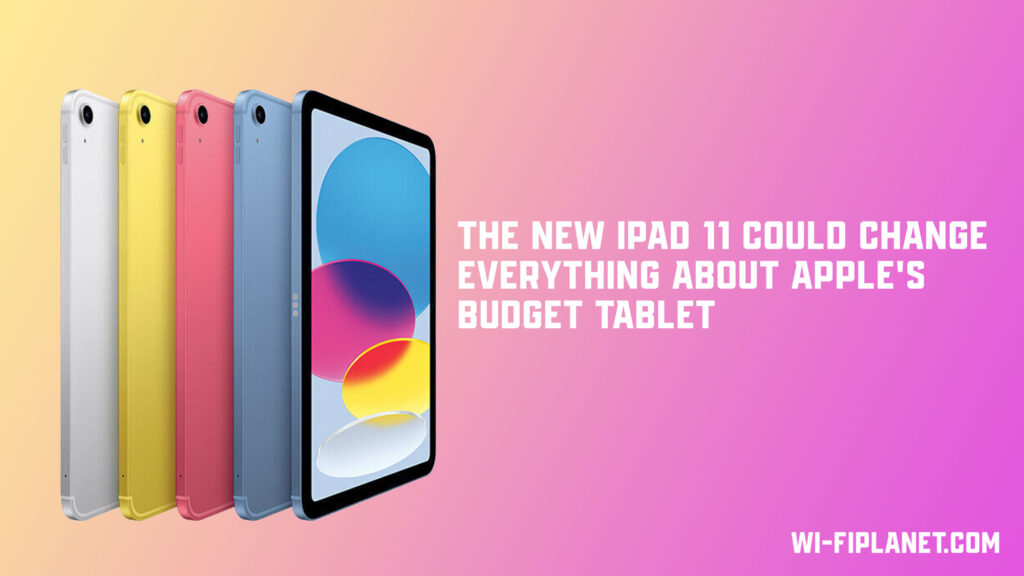After nearly two years of silence for its most affordable iPad, Apple seems ready to unleash a transformation that could redefine what we expect from a “budget” tablet. The current model is powered by the aging A14 chip (now celebrating its fifth anniversary), but multiple sources suggest the iPad 11 will be more than just an incremental update.
From breakthrough AI features to pro-level accessories, this refresh could finally bridge the gap between Apple’s entry-level and premium tablets while maintaining an important accessibility price point. There is a gender.
Apple’s budget iPad revolution: The inside story of what’s to come
The days of compromising the features of Apple’s most affordable iPad may be over. While the current model continues to use four-year-old technology (although the price drop to $349 is welcome), industry insiders are hinting that the next iPad 11 is poised to shatter expectations.
Here’s a comprehensive analysis of what’s actually going on with Apple’s next innovative tablet.
Buy iPad 10th generation on Amazon

Apple Intelligence – Intelligence Revolution
Perhaps the most important upgrade is not in the hardware, but in the software. Sources say the iPad 11 will fully embrace Apple Intelligence, marking a democratic shift in Apple’s AI strategy.
However, the silicon story here is an interesting one. Rather than using the premium 3nm A17 Pro, Apple is likely to introduce an A18 chip that is optimized for AI tasks while maintaining budget-friendly production costs. This means features like Image Playground, Genmoji, and a revamped Siri experience will no longer be reserved for premium users.
Beyond basic connectivity
Connectivity upgrades tell a similarly compelling story. The move to Wi-Fi 6E (with possible Wi-Fi 7 support) and Bluetooth 5.3 is not only spec-based but also future-proof. These standards enable low-latency connectivity, which is important for emerging applications, and suggest that Apple sees the device as a long-term platform rather than just an entry point.
accessory strategy

Perhaps most interestingly, Apple is clearly rethinking its accessory ecosystem. The development of a new “low-cost” Magic Keyboard could change the way we view the entry-level iPad, from content consumption device to genuine productivity tool. This is more than just adding functionality. It’s about expanding possibilities.
The Apple Pencil equation remains complicated. The rumored Apple Pencil Pro support would be revolutionary at this price point, but the technical challenges around wireless charging and magnet placement could be prohibitive. This tension between ambition and cost optimization perfectly encapsulates the balancing act Apple faces with this device.
Price puzzle: Apple’s delicate balancing act
In an age of soaring technology prices, Apple’s iPad 11 pricing strategy is an interesting turn. Sources suggest that the new iPad will maintain its starting price of $349, an important position in Apple’s market strategy. As other devices push the price envelope, this decision speaks volumes about Apple’s commitment to accessibility.
The current two-tier storage strategy (64GB and 256GB) could change significantly, with industry watchers pointing to Apple’s recent trend of increasing base storage across its product lines. The possibility of jumping to 128GB with no price increase would significantly strengthen the value proposition of iPad 11, especially as app size and media consumption demands continue to grow. With upgraded specs and Apple Intelligence features, the $349 product could offer unprecedented value in both the broader tablet market and Apple’s own ecosystem.
Background to the launch According to Bloomberg’s Mark Garman, the iPad 11’s spring launch alongside the iPhone SE and iPad Air means Apple is orchestrating a broader refresh of its accessible device lineup. It is said to be suggesting. The timing may signal a strategic shift in how Apple positions its entry-level products in an increasingly competitive market.


